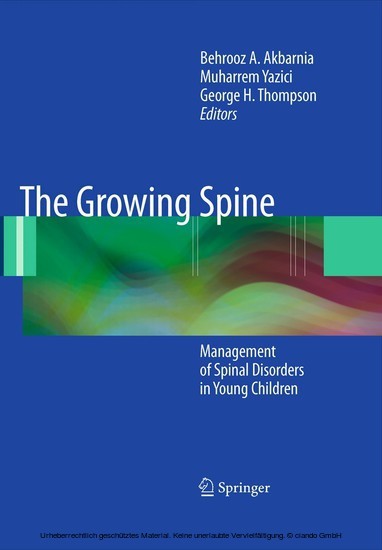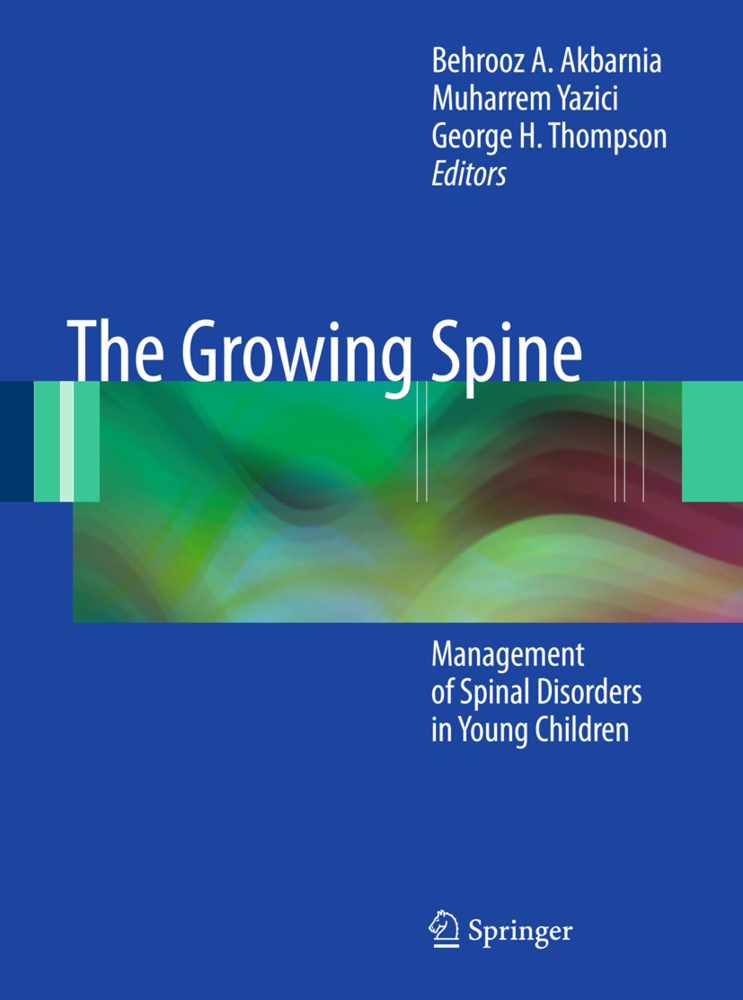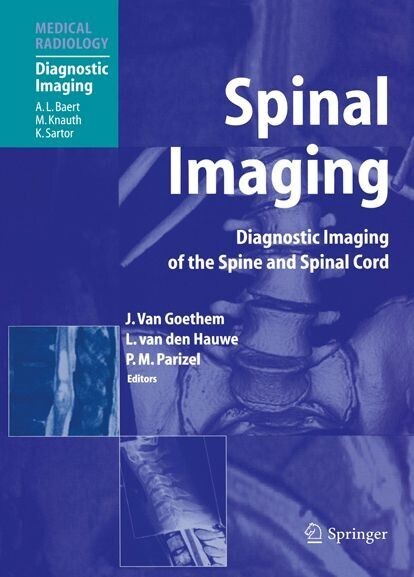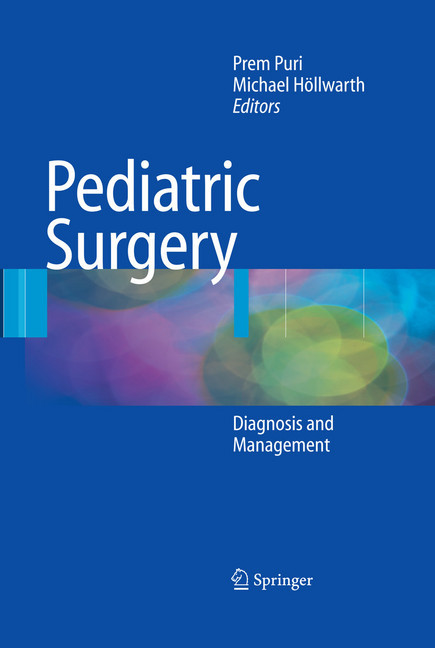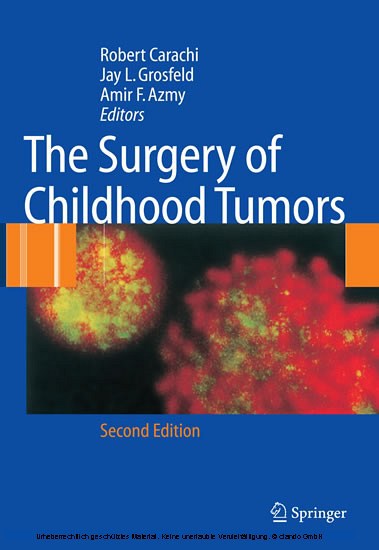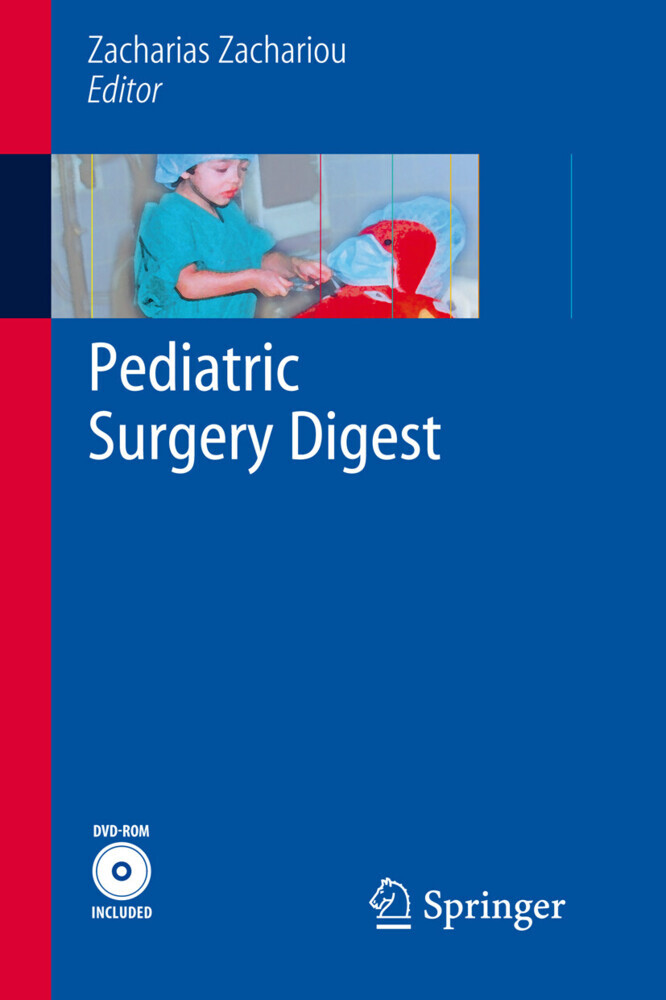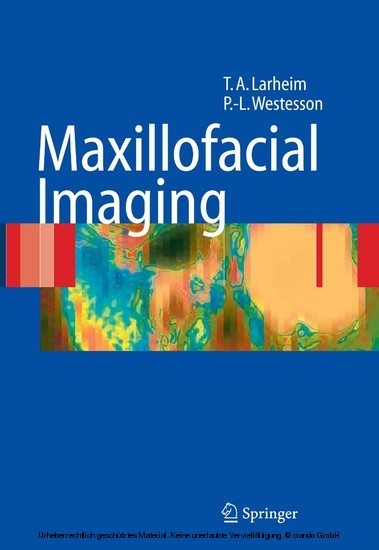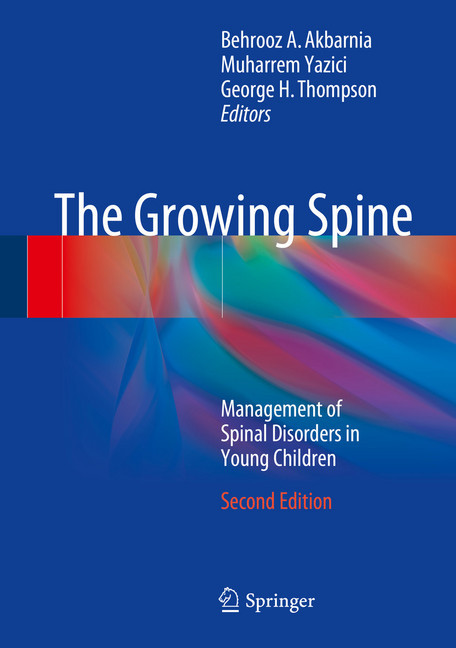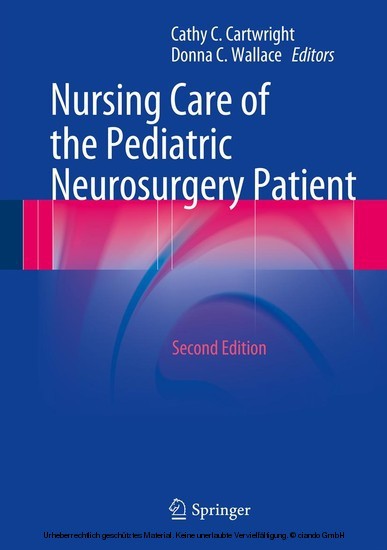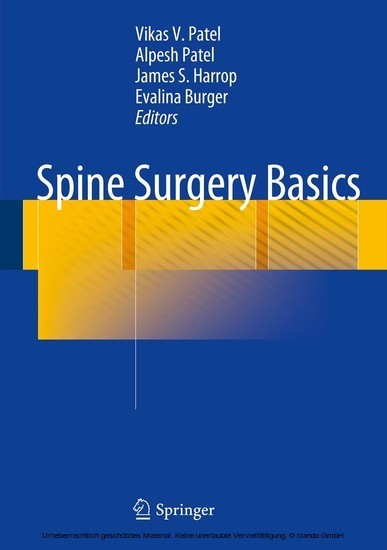The Growing Spine
Management of Spinal Disorders in Young Children
Spinal disorders in very young children may be caused by a variety of conditions. The treatment of such conditions is often challenging due to the age of the patient and the progressive nature of the deformity. There also may be associated problems such as congenital anomalies, respiratory insufficiency, and neurological problems. Depending on the etiology of the deformity, these children are often cared for by multiple specialists including pediatricians, pediatric orthopaedists or orthopaedic spine surgeons, neurologists, pediatric surgeons, pediatric neurosurgeons, oncologists, and/or pulmonologists. Health professionals in all of the mentioned disciplines are involved in the management of these patients, which is why compiling a comprehensive textbook that is not limited to orthopedic specialists is essential. This textbook will effectively help to standardize the care of these patients. Furthermore, other professionals such as nurses, physical therapists and healthcare professionals in training are usually not familiar with these conditions and are in need of a reference book to consult when caring for children with spinal deformities.
1;The Growing Spine;2 1.1;Dedication;4 1.2;Foreword I;6 1.3;Foreword II;8 1.4;Foreword III;10 1.5;Preface;11 1.6;Contents;13 1.7;Contributors;17 1.8;Section I:General ;24 1.8.1;1: Embryology and Anatomy:Spine/Spinal Cord ;25 1.8.1.1;1.1 Introduction;25 1.8.1.2;1.2 Early Development;25 1.8.1.3;1.3 Somite Formationand Differentiation;27 1.8.1.4;1.4 Central Nervous SystemDevelopment;29 1.8.1.5;1.5 Peripheral Extension of the CNS;Formation of the PeripheralNervous System31 1.8.1.6;1.6 Vertebral Ossifi cation;31 1.8.1.7;1.7 Conclusion;34 1.8.1.8;References;34 1.8.2;2:Normal Growth of the Spine and Thorax;35 1.8.2.1;2.1 Growth Holds the Basics;35 1.8.2.2;2.2 Biometric Measurements;36 1.8.2.2.1;2.2.1 Standing Height;36 1.8.2.2.2;2.2.2 Sitting Height;37 1.8.2.2.3;2.2.3 Subischial Limb Length;37 1.8.2.2.4;2.2.4 Arm Span;37 1.8.2.2.5;2.2.5 Weight;39 1.8.2.2.6;2.2.6 The Multiplying Coeffi cient;41 1.8.2.3;2.3 Chronology;41 1.8.2.3.1;2.3.1 Intrauterine Development;41 1.8.2.3.2;2.3.2 From Birth to 5 Years;41 1.8.2.3.3;2.3.3 From 5 Years to Beginningof Puberty;42 1.8.2.3.4;2.3.4 Puberty: A Turning Point;42 1.8.2.3.5;2.3.5 Secondary Sexual Characteristics;44 1.8.2.3.6;2.3.6 Pubertal Diagram and Peak HeightVelocity (Figs. 2.7-2.10);45 1.8.2.4;2.4 Estimation of Skeletal Maturity;46 1.8.2.5;2.5 The Concept of Risser sign isMisleading (Figs. 2.13, 2.14);47 1.8.2.6;2.6 Growth of the Trunk;49 1.8.2.6.1;2.6.1 Growth in the Spinal Column;49 1.8.2.6.2;2.6.2 Cervical Spine;50 1.8.2.6.3;2.6.3 T1-S1 Segment (Figs. 2.15, 2.16);50 1.8.2.6.4;2.6.4 Thoracic Spine T1-T12(Figs. 2.19, 2.20);50 1.8.2.6.5;2.6.5 Lumbar Spine (L1-L5);50 1.8.2.6.6;2.6.6 The Thoracic Growth is the FourthDimension of the Spine [20];51 1.8.2.6.7;2.6.7 Scoliosis and Puberty;55 1.8.2.6.8;2.6.8 The Scoliotic Risk;57 1.8.2.6.9;2.6.9 Growth in the Paralytic Child;58 1.8.2.7;2.7 Lessons Learned from Growth;58 1.8.2.8;2.8 The Growing Spine:from the Normal to Abnormal;59 1.8.2.8.1;2.8.1 The Pathologic Spine is Dominatedby the Crankshaft Phenomenon;59 1.8.2.8.2;2.8.2 Growth DisturbancesAfter Spinal Arthrodesis;59 1.8.2.9;2.9 From Birth to 5 Years of Age,the Spine-Rib-Lung Complex;60 1.8.2.9.1;2.9.1 A Thorough Pediatric Evaluationis a Priority;60 1.8.2.9.2;2.9.2 From Five to Puberty,a Quiescent Period;61 1.8.2.9.3;2.9.3 What we Know, Where we are,and Which Way to Follow?;62 1.8.2.10;References;62 1.8.3;3:Biomechanics in the Growing Spine;65 1.8.3.1;3.1 Background;65 1.8.3.2;3.2 Biomechanical Considerationsfor Instrumenting the GrowingSpine;66 1.8.3.3;3.3 Conclusions;68 1.8.3.4;References;69 1.8.4;4:Genetics;71 1.8.4.1;4.1 Basic Genetics;71 1.8.4.2;4.2 The Chromosome and DNA;71 1.8.4.3;4.3 Genetic Polymorphismsand Their Relation to Diseases;73 1.8.4.4;4.4 Types of Disease;74 1.8.4.5;4.5 Disease Gene Mapping;74 1.8.4.6;4.6 Linkage Analysison Familial Subjects;75 1.8.4.7;4.7 Case-Control Association Studieson Population-Based Subjects;76 1.8.4.8;4.8 Genetic Mutationsto Spinal Abnormalities;77 1.8.4.9;4.9 Genetics of Idiopathic Scoliosis;78 1.8.4.10;References;80 1.9;Section II:Evaluation of the Growing Child;82 1.9.1;5:Clinical Examination;83 1.9.1.1;5.1 Introduction;83 1.9.1.2;5.2 Medical History;83 1.9.1.2.1;5.2.1 Birth History;83 1.9.1.2.2;5.2.2 Family History;83 1.9.1.2.3;5.2.3 Spinal Deformity History;83 1.9.1.3;5.3 Physical Examination;84 1.9.1.3.1;5.3.1 Overall Health and Reviewof Systems;84 1.9.1.3.2;5.3.2 Neurological Status;84 1.9.1.3.3;5.3.3 Mental Status;84 1.9.1.3.4;5.3.4 Pain Status;84 1.9.1.3.5;5.3.5 Musculoskeletal Statusand Examination of the Thorax;84 1.9.1.4;5.4 Diagnostic Laboratory Testing;86 1.9.1.5;5.5 Diagnostic Imaging;86 1.9.1.5.1;5.5.1 Radiographs;86 1.9.1.5.2;5.5.2 Magnetic Resonance Imaging (MRI);86 1.9.1.5.3;5.5.3 Computed Tomography (CT);87 1.9.1.6;5.6 Developing a ComprehensiveTreatment Plan;87 1.9.1.6.1;5.6.1 Postoperative Examination;87 1.9.1.7;References;87 1.9.2;6:Comorbidities Associatedwith Early Onset Scoliosis;88 1.9.2.1;6.1 Introduction;88 1.9.2.2;6.2 Orga
Akbarnia, Behrooz A.
Yazici, Muharrem
Thompson, George H.
| ISBN | 9783540852070 |
|---|---|
| Artikelnummer | 9783540852070 |
| Medientyp | E-Book - PDF |
| Auflage | 2. Aufl. |
| Copyrightjahr | 2010 |
| Verlag | Springer-Verlag |
| Umfang | 629 Seiten |
| Sprache | Englisch |
| Kopierschutz | Adobe DRM |

